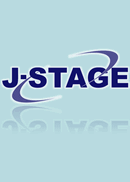Volume 29, Issue 2
Displaying 1-19 of 19 articles from this issue
- |<
- <
- 1
- >
- >|
-
Article type: Cover
2013 Volume 29 Issue 2 Pages Cover3-
Published: November 30, 2013
Released on J-STAGE: February 27, 2017
Download PDF (1190K) -
Article type: Appendix
2013 Volume 29 Issue 2 Pages App5-
Published: November 30, 2013
Released on J-STAGE: February 27, 2017
Download PDF (1040K) -
Article type: Index
2013 Volume 29 Issue 2 Pages Toc3-
Published: November 30, 2013
Released on J-STAGE: February 27, 2017
Download PDF (328K) -
Article type: Article
2013 Volume 29 Issue 2 Pages 65-74
Published: November 30, 2013
Released on J-STAGE: February 27, 2017
Download PDF (9975K) -
Article type: Article
2013 Volume 29 Issue 2 Pages 75-85
Published: November 30, 2013
Released on J-STAGE: February 27, 2017
Download PDF (10056K) -
Article type: Article
2013 Volume 29 Issue 2 Pages 86-93
Published: November 30, 2013
Released on J-STAGE: February 27, 2017
Download PDF (6968K) -
Article type: Article
2013 Volume 29 Issue 2 Pages 94-103
Published: November 30, 2013
Released on J-STAGE: February 27, 2017
Download PDF (8977K) -
Article type: Article
2013 Volume 29 Issue 2 Pages 104-112
Published: November 30, 2013
Released on J-STAGE: February 27, 2017
Download PDF (8179K) -
Article type: Article
2013 Volume 29 Issue 2 Pages 113-119
Published: November 30, 2013
Released on J-STAGE: February 27, 2017
Download PDF (6581K) -
Article type: Article
2013 Volume 29 Issue 2 Pages 120-122
Published: November 30, 2013
Released on J-STAGE: February 27, 2017
Download PDF (2140K) -
Article type: Article
2013 Volume 29 Issue 2 Pages 123-124
Published: November 30, 2013
Released on J-STAGE: February 27, 2017
Download PDF (1639K) -
Article type: Article
2013 Volume 29 Issue 2 Pages 125-126
Published: November 30, 2013
Released on J-STAGE: February 27, 2017
Download PDF (1714K) -
Article type: Article
2013 Volume 29 Issue 2 Pages 127-128
Published: November 30, 2013
Released on J-STAGE: February 27, 2017
Download PDF (1289K) -
Article type: Appendix
2013 Volume 29 Issue 2 Pages 129-132
Published: November 30, 2013
Released on J-STAGE: February 27, 2017
Download PDF (3020K) -
Article type: Appendix
2013 Volume 29 Issue 2 Pages App6-
Published: November 30, 2013
Released on J-STAGE: February 27, 2017
Download PDF (142K) -
Article type: Appendix
2013 Volume 29 Issue 2 Pages App7-
Published: November 30, 2013
Released on J-STAGE: February 27, 2017
Download PDF (142K) -
Article type: Appendix
2013 Volume 29 Issue 2 Pages App8-
Published: November 30, 2013
Released on J-STAGE: February 27, 2017
Download PDF (142K) -
Article type: Cover
2013 Volume 29 Issue 2 Pages Cover4-
Published: November 30, 2013
Released on J-STAGE: February 27, 2017
Download PDF (544K) -
Article type: Index
2013 Volume 29 Issue 2 Pages Toc4-
Published: November 30, 2013
Released on J-STAGE: February 27, 2017
Download PDF (484K)
- |<
- <
- 1
- >
- >|
